Tonnellerie Francois Frères: High moat company at discount
Tonnellerie Francois Frères or TFF group (EPA:TFF) is the #1 manufacturer of wine and alcool barrels (and oak staves), it has a wide moat and trading at a discount to historical valuation
Tonnellerie Francois Frères or TFF group is the #1 manufacturer of wine and alcool barrels (and oak staves). This company is vertically integrated having access to oak forest, sawmills to make the oak staves and barrels fabs close to customers. It is more than a century old with roots in the Burgundy region in France and with ancestral know-how of how to process and age the oak wood to make perfect barrels for wine. The current CEO Jerome Francois is the 4th generation President to head the TFF group of the Francois family. The Family owns 71% of the shares.
The article constitutes my personal views and is for entertainment purposes only. The main goal of this article is to log my personal views. Nothing in this article or these posts in this blog should constitute an investment advice. The projections and estimates provided here should be considered as purely speculative. Do your own model and projections. Please refer to the disclaimer at the end of this article for more details.
Centenial and ancestral know-how, vertically integrated, #1 in a niche market, these are music to my ear.
TFF group operates through 3 segments: Wine, Bourbon and Scotch. The Wine and Bourbon are similar in terms of product as they are selling new oak barrels and oak staves to the wine and bourbon producers. Bourbon producer must age for at least 2 years the whisky in a new american oak barrel. The scotch business is a bit different where TFF group repairs or recondition already aged oak barrels. Wine makers use both new and aged oak barrels.
The largest and oldest segment is the wine market with 210 Million EUR of sales in the latest fiscal year. The fastest growing and newest segment is the Bourbon market with sales of 198 Million EUR. The last one is the Scotch whisky segment with sales of 78 Million EUR.
Centennial and ambitious
The following shows the evolution of sales of each segment since 1999.
Three interesting observations can be made:
Wine has risen steadily since 1999 at a CAGR of 6%
Scotch Whisky has started from nothing in 2008 to around 78 Million in 2024
Bourbon has risen at a CAGR of 39% from 20 Million in 2017 to 198 Million EUR in 2024.
It shows that management is not just happy to continue their centennial business in the French wine market but is willing to take some calculated risks to leverage their ancestral know-how and expand in new continents and new markets successfully. I believe most of these growth initiatives were taken with Jerome Francois at the helm.
Evolution of the wine market:
The wine market was around 50 Million EUR in 1999 and has increased steadily to 210 Million EUR. The growth is steady at a CAGR of 6% but lumpy. Sales is not straight line and depends on yearly wine production (i.e. good or bad weather). In the 1990s, they have steadily expanded globally from the France base to USA, rest of Europe and Australia. They have made tens of bolt-on acquisitions in the wine business as we will discuss later in the Acquisition section. They also expanded vertically by securing access to key forests and sawmills in France via acquisitions.
In 2024, the USA was the largest wine market with sales of around 70 million EUR (estimated based on 282 million overall sales in USA less 198 million from Bourbon and some american whisky sales). France was the second largest market with 56 million EUR. Followed by the rest of Europe 50 million EUR and Oceania/South Africa 22 Million EUR.
The following charts shows sales in Million EUR of the Wine segment since 2015. Sales has risen slowly but steadily from 2015 to 2020, until COVID then risen sharply in 2023 and 2024. Q1 2025 is down 4% and 8% like for like.
Scotch Market started in 2008
The Scotch Whisky segment started from nothing in 2008 to a significant 78 million EUR. According to the company, they have a 90% market share of the independent barrels manufacturers and repair for Scotch. I suspect a lot of the large Scotch producers have internalize the repair of oak barrels or casks.
Sales have risen quickly from 2008 to 2015, but has since flatten. I believe there is strong synergies with the Bourbon market as most of the barrels purchased for the Scotch aging comes from the oak barrels that aged Bourbon.
I will address in more details the Scotch business in PART2. The Scotch business is less important to the investment thesis so there is less benefits to deeply understand this segment.
Meteoric rise of the Bourbon operation started in 2017
TFF has build from nothing a 200 million EUR operation for the Bourbon market in just 7 years and without any acquisition. In 2024, TFF has built (de novo) 2 cooperage sites with 800k barrels of capacity and 9 staves mills sites - 840k sets of staves - in 5 states.
The start of the Bourbon adventure was when TFF decided to invest 37 Million EUR in the Speyside Bourbon cooperage in Ohio.
The company continued to invest into this site over the years to expand production. a new investment of 7.3 Million USD was announced in 2023 to increase production to 600k barrels.
This was done with great sacrifice to the bottom line. Startup costs was around 10 Million EUR every year during the critical ramp-up period (2016-2020). To illustrate this, TFF reported in the 2018-2019 annual report, to have build or planning to build 5 new sites for the Bourbon market in 18 months on top of acquiring a top cooperage in Bordeaux :
A first stave mill (Merranderie) on June 2018 in Virginia
A 2nd stave mill on July 2018 in Ohio
A 3rd stave mill on October 2018 in Ohio
A 4th stave mill on October 2019 in Kentucky
A 2nd Cooperage (tonnellerie) on January 2020 in Atkins Virginia
Acquisition of Darnajou a prestigieuse cooperage in Saint Emilion - Bordeaux
The strong investment lead to an exceptional rise in sales from 20 Million EUR in 2018 to 198 Million EUR in 2024.
By building and expanding their 2 cooperages in Ohio and Virginia, TFF was able to sell an increasing amount of Bourbon barrels as shown below:
All this was done very quickly. But the demand was there. Here is a mind boggling chart:
This chart show the inventory of aged Bourbon barrels. The inventory of aged barrels put into the ground have skyrocked since 2012. Going from around 5 million barrels to 12.7 million barrels. 2.7 million barrels were produced and put into a new oak barrels to be aged in 2022 while around 1.7 million barrels were consumed (from the aged inventory). Such a ballistic chart cannot go flat in one year. For sure an increasing amount of inventory will be put into barrels over the next 5 years.
As a producer of american oak barrels, they are 2 trends that are very positive:
Bourbon consumption is one the rise - and it has been for the last 15 years - and is expected to increase by 5.9% annually until 2031. According to Cognitive Market Research, The Global Bourbon Market size is growing at a compound annual growth rate (CAGR) of 5.90% from 2024 to 2031.
The strongest growth in the Bourbon market is the Premium market. Premium market requires the whisky to be aged more than the standard 2 years. This means more inventory into the ground.
Considering that Bourbon is aged around 4 years, it makes sense to store more for aging than what is consumed today for a growing market. What is stored today should be based on what will be consumed in 4 years or more. Since Bourbon is projected to grow at close to 6%, what is stored today must be 25% higher than today’s projection. On top of that each year a portion of the Bourbon evaporates as it get older - Angel’s share.
As bourbon ages, it develops a smoother, more rounded profile. Young bourbon tends to be harsh and sharp, but extended aging mellows these qualities, replacing them with rich, complex flavors such as caramel, vanilla, and spice. The interaction with the charred oak introduces smoky notes and enhances the overall depth of the spirit.
As a final note, in year 2020, TFF claimed to have a market share of 15% of the Bourbon oak barrel market. Based on my own estimates, TFF share has grown their market share to 24% in 2023. TFF is planning to increase production capacity to 1.1 Million barrels over the next few years. This should translate TFF’s market share to over 30%.
High operating margin: Indicative of a company with Moat
I mentioned that $TFF is a company with moat. One way to verify this is to look at the historical operating margin over time. A company with moat is a company that can protect its margin in good and bad times.
Operating margin was very stable around 25% from 2002 to 2008. Then it fell to 20% from 2009 to 2015. This corresponds to the entry in the Scotch business. In 2016 to 2022 (March 2022), it fell to 15%. This corresponds to the “sacrifice” years, where the company was investing heavily in the build-up of the Bourbon production with non recurring ramp-up cost of 10 Million per year. In 2023, the Bourbon market finally generated EBITDA margin of 17% so that overall operating margin was 18%. In 2024, Bourbon EBITDA margin reached 19% while overall EBITDA margin was 22% and operating margin 19%. Since Wine is about the same size as Bourbon now, it is safe to assume that EBITDA margin of wine is around 25%.
I would not be surprised that the Wine market had a steady 25% EBITDA margin for pretty much the whole period (2002-2024). Since the Wine market faced several bad weather year over the last 23 years and multiple recessions, to have a steady operating for the Wine market is a true sign of a wide moat business.
The Pat Dorsey’s criteria on moats
According to Pat Dorsey’s book the Little Book that Builds Wealth, there are 5 categories that are indicative that a company has moat:
Intangibles (brands, patents, regulatory capture)
Switching cost
Network effect
Process or scaling factor for low cost producer
Niche - too small for big player to enter
Intangibles: The cumulative knowledge over a century of producing perfectly aged staves of carefully selected oak trees to make a barrel that will provide the right mix of tannins for the wine is an intangible very hard to reproduce.
Switching cost: Once a super premium wine maker find the right cepage with the right aging process using the perfect oak barrel that injects the desired level of flavours (European oak imparts cloves, cedar and coffee flavours) and so on during the aging of the wine, it would be extremely hasardous to switch the producer of the oak barrel, likely changing not only the way the oak wood (staves) was aged and extracted but also the origin of the oak tree.
5. Niche - The production of oak barrel is very specialized and niche and it is almost impossible to have a large player of generic wood processor coming into this market. Access to French forest with oak trees or the same for american oak tree forest is protected and limited. And both are not interchangable, ie american oak tree and French oak tree does not inject the same flavors. The market will never be impacted by a low cost producer from China or Brazil.
Recent events
Sharp drop in price: TFF group has seen its stock going down sharply since the beginning of the year by 28% year to date.
Strong fundamentals: In contrast, fundamentals have been extremely good in the recent years with operating income increasing by 16% from last year (the Company fiscal year ends on 31st of March) and at a CAGR of 36% for the last 3 years.
The stocks was trading down at the beginning of the year probably with the expectation that incoming results would be weak since the major customers of the industry (Spirits Producers) are seeing low single digit decline. In contrast, the company has reported strong result this July for the 2024 fiscal year ending on March31st and was expecting slower growth in 2025 but still positive at around 500m of sales.
Weak Q1 and revised down forecast: The forecast change last week when it reported weak Q1 preliminary results as below:
The weakness in wine was expected, as weather was bad in Europe. The wine division is highly dependent on annual wine production. Premium winemakers which use oak barrels to age the wine, requires new oak barrels every year. So in a bad year, winemakers need less oak barrels. Thankfully, TFF sales its wine barrel across the globe, as wine production in Europe represents around 50% of its sales.
The bourbon small decline in Q1 is a bit of surprise. The bourbon oak market has seen some impressive sales growth in the last 7 years at a CAGR of 39%. Just last year, bourbon sales was up 23%.
Expectations over the next 5 years
The following is based on my own analysis, so take the rest of this section with a grain of salt.
The Wine market will see steady annual growth of around 5% as in the past 23 years and the past 9 years. This will be achieved by a combination of bolt-on acquisition and pricing. The EBITDA margin will remain steady. In 5 years, EBITDA will generate 66 Million EUR.
The Bourbon market after a year of hiatus, will resume growth at 10%-15%. EBITDA margin should increase by 3% to get to 22%. This will result in a EBITDA of 70 Million EUR.
Scotch may actually raise only slightly and provide 20 Million EUR EBITDA with a EBITDA margin of 22%. This would bring total EBITDA of 156 Million EUR in 5 years or about 50% higher than today.
Current Valuation and historical valuation
In the last 10 years, TFF has traded at an average EV/EBITDA of 15x. Today it is trading at 9x EV/EBITDA, the lowest level in the last 10 years. Clearly the street do not believe that TFF can grow EBITDA by 50% over the next 5 years.
Assuming that once the transitional year of 2025 has passed and growth normalized again, historical valuation should resume and in 5 years at 15x EBITDA, the EV could be at 2.3 Billion EUR, for more than a double. This is what I am ready to bet own.
A more pessimistic case is that Bourbon growth stalls, and EBITDA grows slowly at around 5% thanks to Wine steady growth and better margin from the Bourbon market. In this scenario there is less growth to finance, and the company pays back debt and increase dividends. The Street in that scenario will likely reward investor with a higher EV/EBITDA than current depressed 9x and we should see a reevaluation once slow growth resume after the transition year. Even if EV/EBITDA do not reach historical level of 15x, it will likely go back to 12x, so this would justify a 35% increase of price plus the 5% growth. So downside is limited here for all scenarios.
This is the reason why I made $TFF a large position (top 10) in the Wolfpack21 portfolio.
PART 2 Next week
I am planning to continue my investigation to review in more details all the acquisition that have been done in the last 20 years. I am currently digging the 2014 annual report. I also want to understand how the ramp-up for the Scotch market was done going through the annual reports from 2007 to 2015. Also debt level evolution is another aspect that need to be addressed.
I hope you enjoy PART1 and let me know if you have aspects that you want me to tackle.
Cheers!






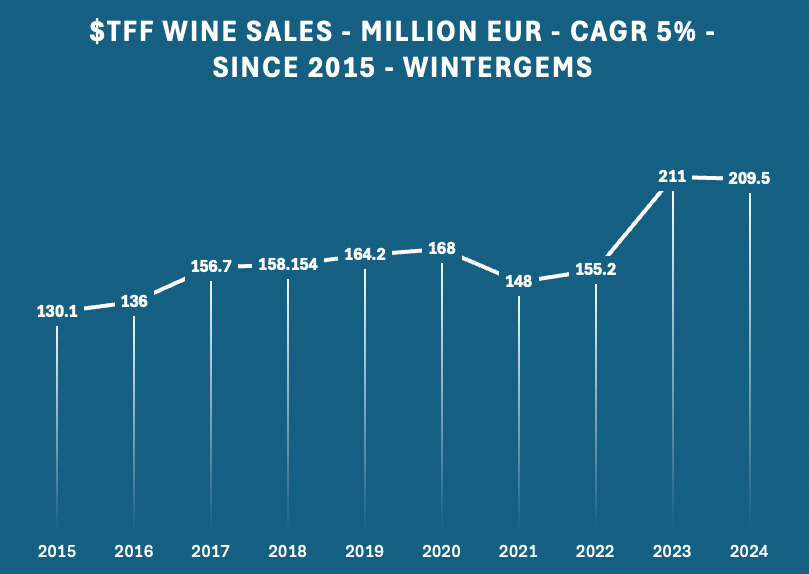


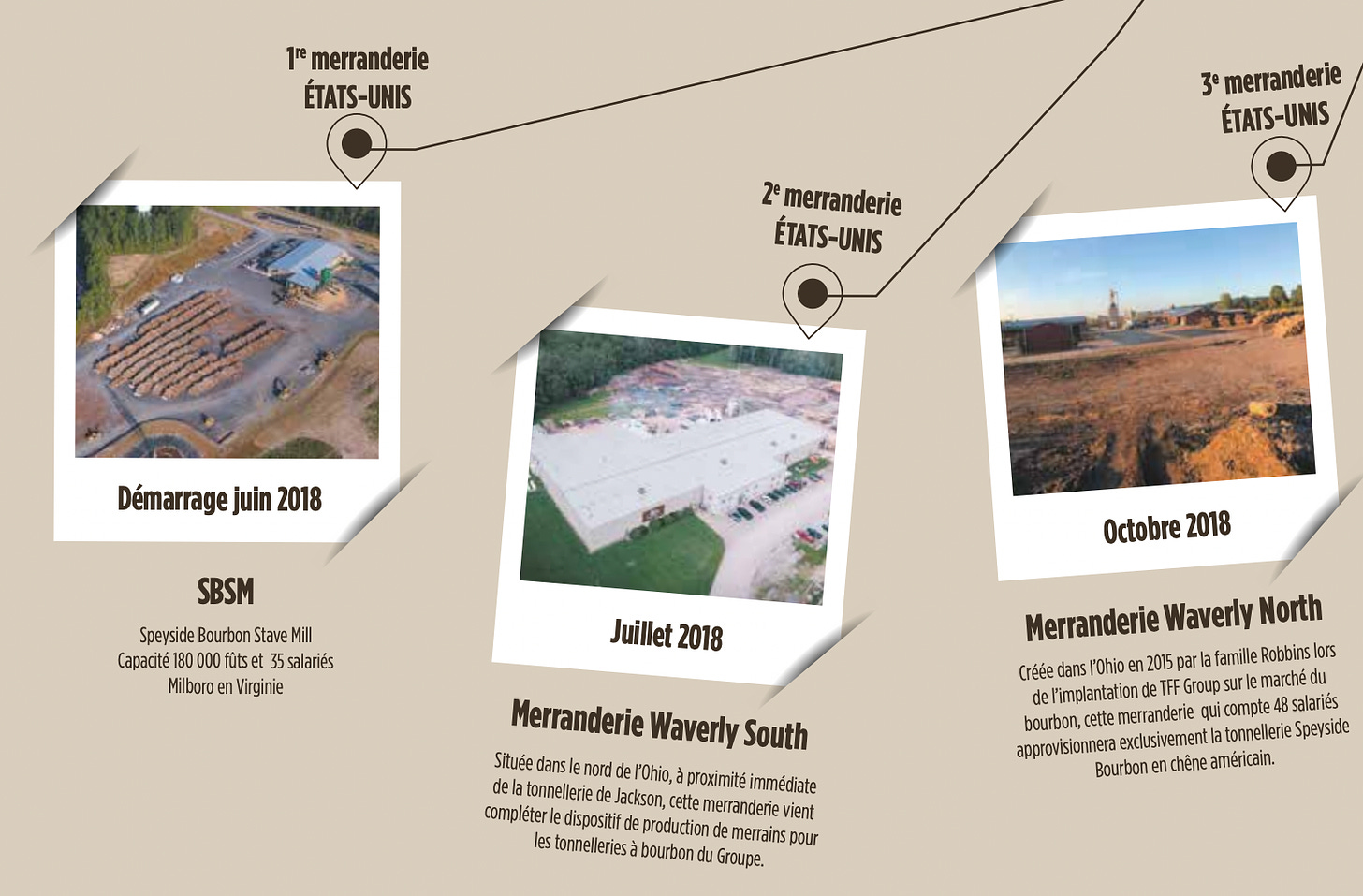
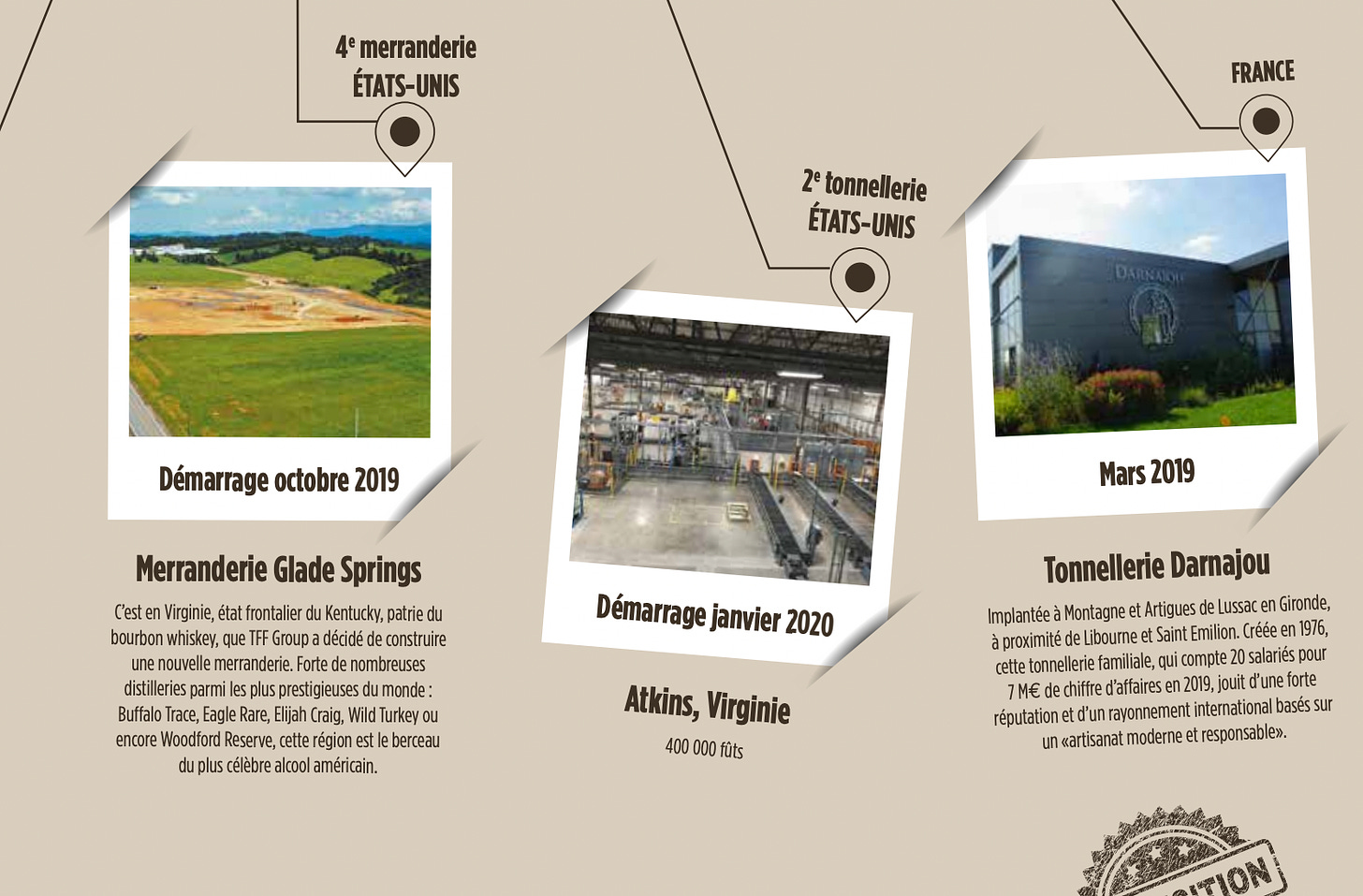



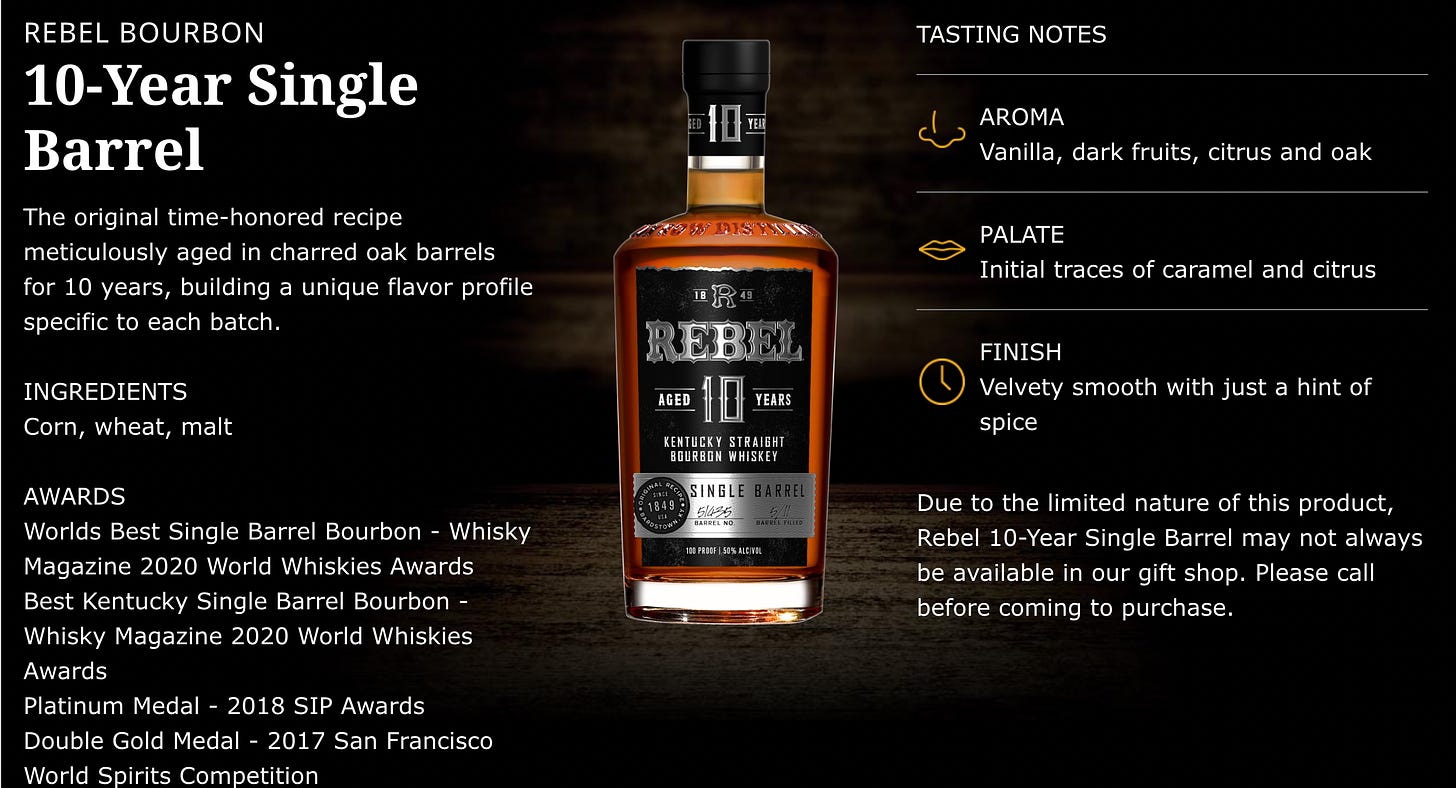

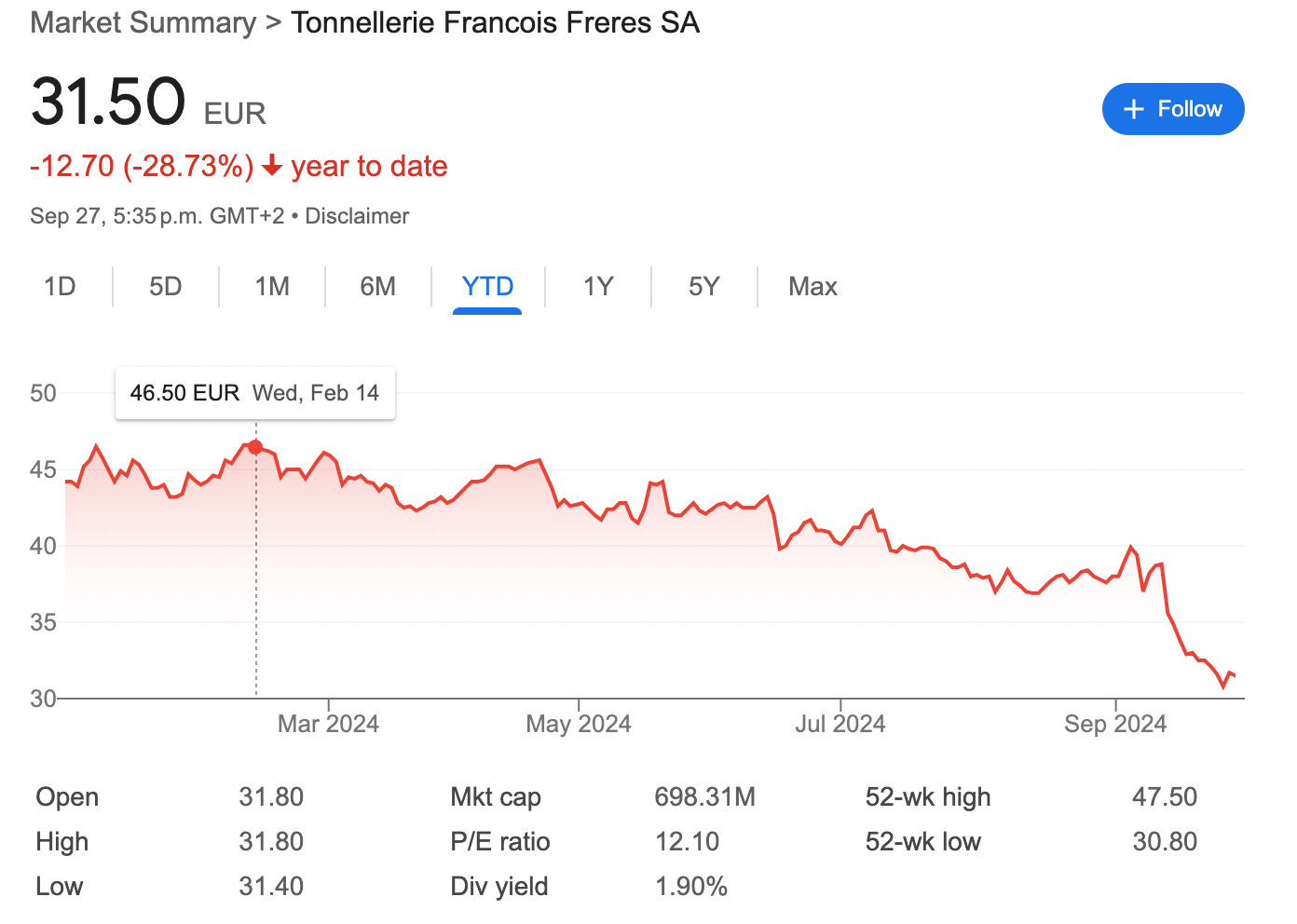
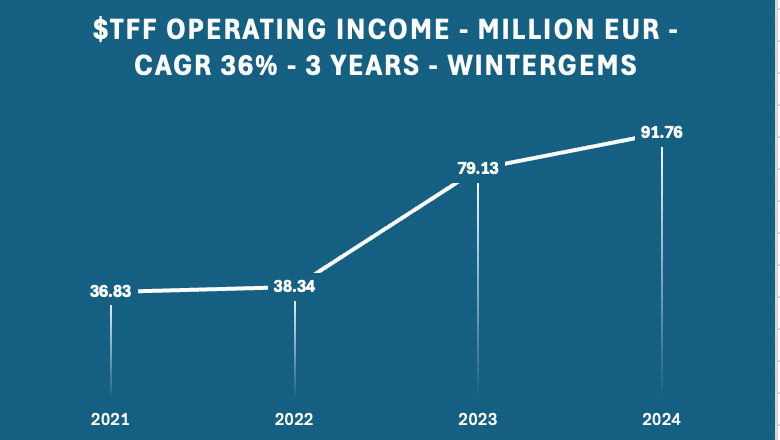


Thanks for share your investment research!
I wrote about TFF too in my Substack profile, it could be interesting to share information.
About the industry, I would add the importance of the wood or oak price to determinate the revenues of every market company.
Good job, I will be waiting the second part!
Thanks for the write up!
About the Bourbon graph inventory level going ballistic, what make you so sure it will keep raising? Couldn’t that be over supply that will depress prices?